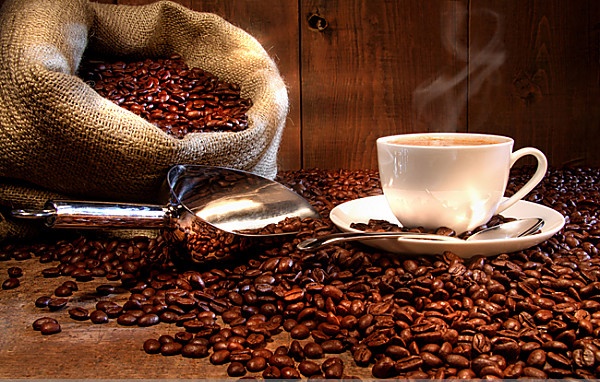Introduction to the characteristics of Bolivian Coffee Flavor Manor producing area of High quality mixed Coffee
In 1932, the Chaco War broke out between Bolivia and Paraguay for oil resources in the North Chaco region. Bolivia was defeated and lost a large area of territory.
The people's armed uprising broke out in April 1952, and Paz Estenssoro, leader of the nationalist revolutionary movement, became president. Since then, there have been frequent military coups and long-term political instability. In October 1983, a modern bourgeois democracy with South American characteristics was restored.
On December 18, 2005, the presidential election was held. Aymara Indian, Evo Morales, leader of the Bolivian socialist movement, won the election with 53.75% of the vote and took office on January 22, 2006. He became the country's first Native American president and Bolivia's first left-wing president. The construction of the Bolivian state with progressive community socialism (that is, Indian socialism) as the basic value concept began.
On 25 January 2009, the 16th Constitution in the history of the Republic of Bolivia, which was also the first referendum, was adopted by 61.8% of the votes in favour.
On March 26th, Morales signed a supreme decree to change the original name of the country "Rep ú blica deBolivia" to "Plurinational State of Bolivia" (El Estado Plurinacional deBolivia), which is rich in mineral resources, mainly tin, antimony, tungsten, silver, zinc, lead, copper, nickel, iron, gold and so on. Mineral deposits are rich, with tin reserves of 1.15 million tons, ranking second in the world; iron reserves of 45 billion tons, second only to Brazil in Latin America; and lithium reserves of 100 million tons, ranking first in the world. [7]
Petroleum and natural gas
Bolivia is rich in oil and gas resources. Proven oil reserves are 929 million barrels and proven natural gas reserves are 52.3 trillion cubic feet as of 2013.
Forestry
Rich in resources, the forest covers an area of 530000 square kilometers (53 million hectares). The main wood varieties are: mahogany, red juniper, American oak,
Native species-Bolivian tiger cat
Native species-Bolivian tiger cat
Sandbox wood, heavy ant wood, Yibei and Longfeng plant.
Fishery industry
Bolivia is a landlocked country, with only 14197 square kilometers of water and 24201 square kilometers of pond area, fishery resources are relatively poor, only produce freshwater fish, mainly: River trout, silver fish and so on. [7]
Other resources
Bolivia is rich in hydropower resources, with a potential developable hydropower installed capacity of 39850 megawatts, with a developed installed capacity of 480 megawatts by 2013, with a degree of development of only 1.2%, with great potential for hydropower development. Bolivia is also rich in wind and solar energy, with a maximum wind speed of 16 meters and 7 seconds in La Paz.
Takesi Manor, the treatment of drinking water and coffee after harvest, uses ice-cold mountains and rivers that melt high mountains, so we give her a nickname: Takesi Snow vein Manor. In addition to a low-temperature, pollution-free environment, fertile and well-drained volcanic soil is also an element of coffee flavor. Although the owner of Agrotakesi SA is rich, he secretly respects nature and the way of getting along with each other, does not over-cultivate, and retains a large number of primitive forests and diverse ecological environment. It is famous for its crops such as apples, orchids and flowers, and now it has won the first prize in the coffee contest, and Takesi's reputation has become even more popular.
I remember that the admirable champion bean in 2007 was Coffee Manor, but her score was overtaken by the 2008 champion Cafe de Cordillera, when the international judges gave it a high score of 92.03. in 2009, Takesi Snow vein Manor got a score of 93.36, surpassing the champion of 2008, and the bidding price was as high as US $35.05. it was the highest bid in CoE national competition in 2009! Osher has been bidding for Bolivia's champion beans for three years in a row. She is really attracted by her delicate floral fragrance, charming sweet vanilla and clean and changeable flavor. In 2010, under the mixture of many factors, Bolivia decided to cancel the national competition. To examine this batch of Takesi winning beans, it was a mixture of feelings and hard-won.
In the past, coffee trees in Bolivia used to act as hedges and ornaments around the garden. Real commercial production began in the early 1950s. The coffee industry in Brazil was seriously damaged by the great frost in 1975, while Bolivia (Bolivia) benefited from it and developed rapidly.
Coffee producing areas in Bolivia:
Bolivian coffee is grown at an altitude of 180,000,670 meters.
Features of Bolivian coffee:
Flavor: high quality mixed coffee
Suggested baking method: medium to deep barbecue
★: general
The market for Bolivian coffee:
The coffee grown in Bolivia, in which Arab washed coffee beans are exported to Germany and Sweden, is not the best today and has a bitter taste.

- Prev

Delicate floral fragrance, full of soft Yega Chuefei Adoto flavor, characteristics, taste and manor introduction
With fresh coffee beans. When buying, pay attention to whether the color of the beans and the size of the particles are the same. Good coffee beans are shiny and have a strong aroma without being mixed with peculiar smell. No matter what kind of coffee beans, freshness is an important factor affecting the quality. When shopping, grab one or two coffee beans and chew them in your mouth with crisp sound (indicating that the coffee is not damp) and teeth and cheeks.
- Next

Introduction to Galapagos Coffee with unique aroma of Ecuadorian Coffee Manor
West coast: including coastal plains and foothills, high in the east and low in the west, generally below 200 meters above sea level, with some hills and low mountains at an altitude of 600 to 700 meters. Belongs to the tropical rain forest climate, the southernmost end begins to transition to the savanna climate. The average annual precipitation decreases from more than 3000 mm to about 500mm from north to south. Central Mountains: the Andes enter Ecuador from Colombia
Related
- Detailed explanation of Jadeite planting Land in Panamanian Jadeite Manor introduction to the grading system of Jadeite competitive bidding, Red bid, Green bid and Rose Summer
- Story of Coffee planting in Brenka region of Costa Rica Stonehenge Manor anaerobic heavy honey treatment of flavor mouth
- What's on the barrel of Blue Mountain Coffee beans?
- Can American coffee also pull flowers? How to use hot American style to pull out a good-looking pattern?
- Can you make a cold extract with coffee beans? What is the right proportion for cold-extracted coffee formula?
- Indonesian PWN Gold Mandrine Coffee Origin Features Flavor How to Chong? Mandolin coffee is American.
- A brief introduction to the flavor characteristics of Brazilian yellow bourbon coffee beans
- What is the effect of different water quality on the flavor of cold-extracted coffee? What kind of water is best for brewing coffee?
- Why do you think of Rose Summer whenever you mention Panamanian coffee?
- Introduction to the characteristics of authentic blue mountain coffee bean producing areas? What is the CIB Coffee Authority in Jamaica?

